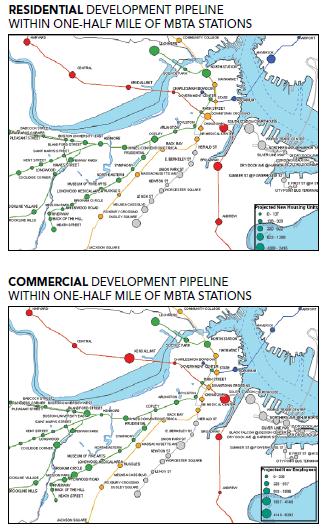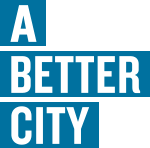ABC Co-sponsors "Hub & Spoke" Report on Future MBTA Capacity
June 18, 2012
It’s a busy season for transportation. Last Monday, some of the region’s most prominent Mayors came together at South Station to call for more funding for transportation. While that was happening, the state legislature released its final bill to help the T close its budget gap for the coming fiscal year; the House passed the bill on Wednesday, and the Senate will take it up next week.
But what we want to focus on this week is a very interesting bit of research that ABC played a role in, which was released at a very successful event on Thursday morning. You may have read in the Globe about this report, which was done by the Dukakis Center at Northeastern University and released by the Urban Land Institute. (MAPC released a companion report the same day.)
This “Hub & Spoke” report, which ABC co-sponsored and helped edit, mapped places in the MBTA system where there is congestion – where we have more people wanting to ride the T than we can or will be able to accommodate –against areas where we expect future development to happen. The good news is that we have a lot of folks wanting to ride the T – 1.3 million trips every work day now, projected to go up to between 1.4 million or 1.7 million by 2020. We also have a lot of development coming on line, both in the “hub” (Downtown, the Back Bay, Kendall Square, Longwood, the Seaport) and out along the “spokes” of T system. By MAPC’s count there’s room for 75,000 new housing units and 130,000 jobs near transit stations, by 2035. Of those, 30,000 housing units and 45 million square feet of commercial real estate are already being planned or under construction.
 So that’s the good news. The bad news is, unless we invest in improving the capacity of our transit system, it’s likely the T won’t be able to handle the influx of new riders that all these Transited Oriented Development (TOD) projects will generate. And this is not a theoretical problem. Right now, major parts of the core of the subway system are at or near capacity, meaning that, during peak times of day, riders are being left standing on the platform because there’s literally no space for them on the trains.
So that’s the good news. The bad news is, unless we invest in improving the capacity of our transit system, it’s likely the T won’t be able to handle the influx of new riders that all these Transited Oriented Development (TOD) projects will generate. And this is not a theoretical problem. Right now, major parts of the core of the subway system are at or near capacity, meaning that, during peak times of day, riders are being left standing on the platform because there’s literally no space for them on the trains.






